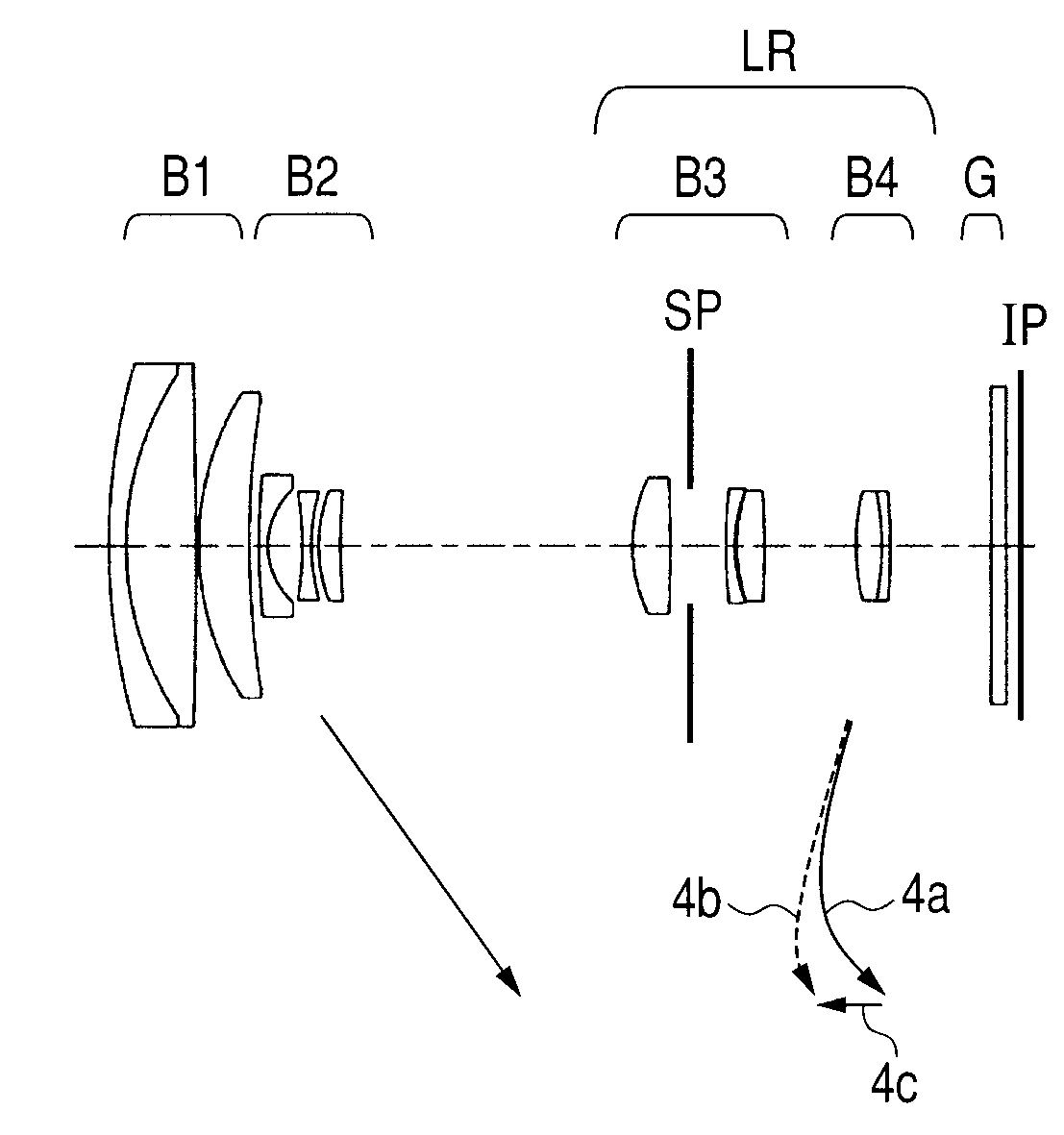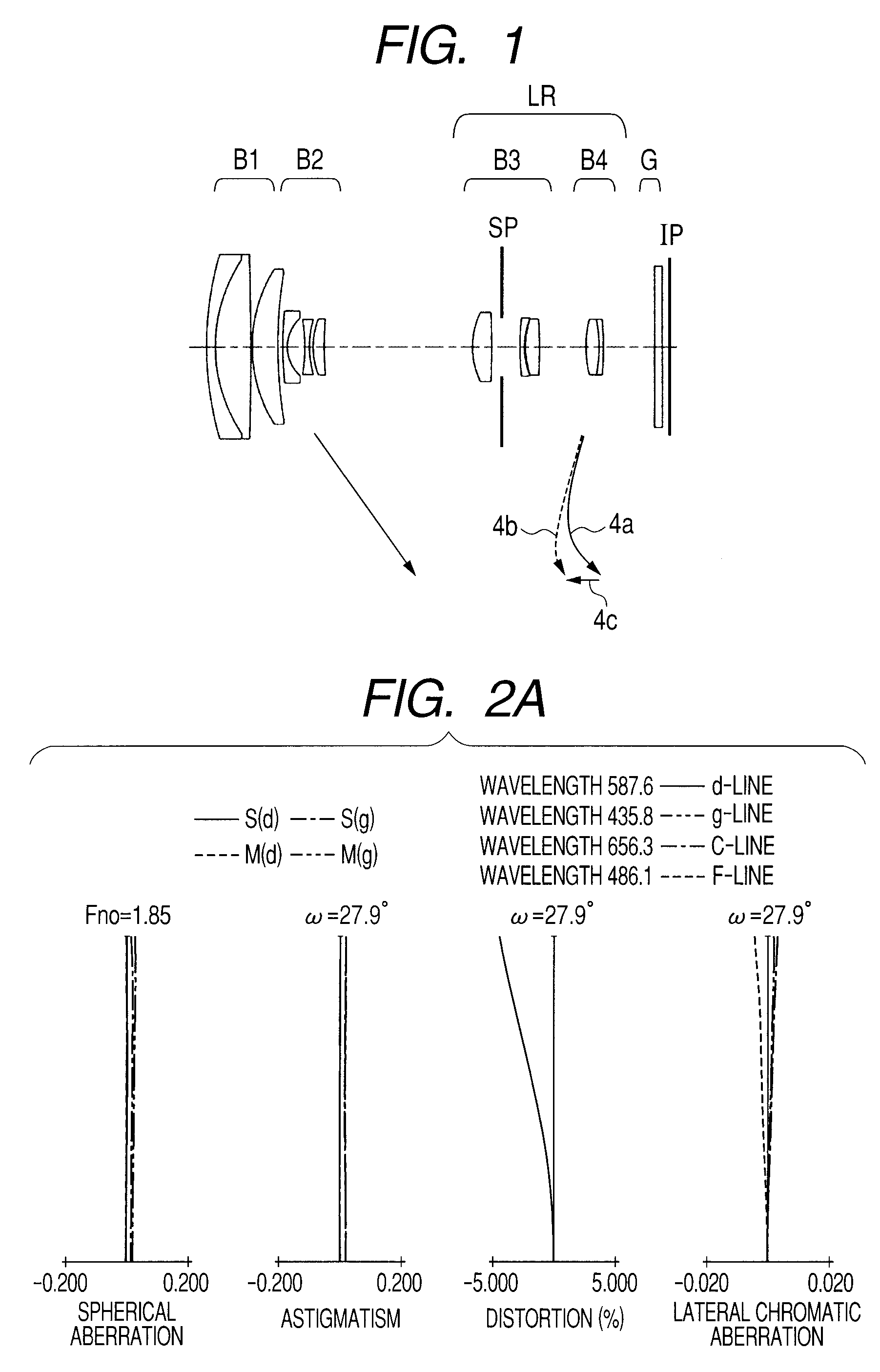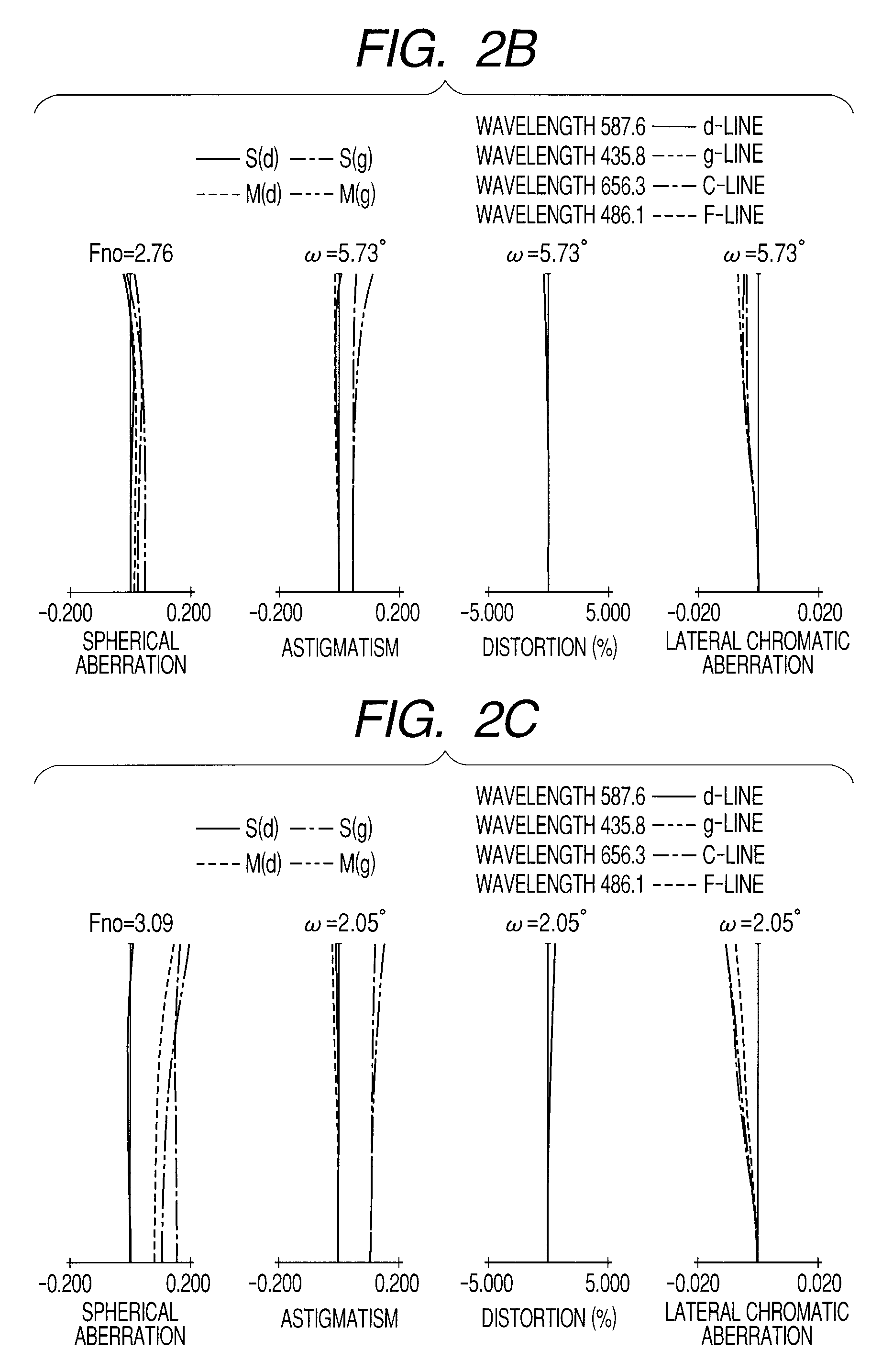Zoom lens system and image pickup apparatus including the zoom lens system
a zoom lens and zoom technology, applied in the field of zoom lens system and image pickup apparatus including the zoom lens system, can solve the problems of coma at the telephoto end, difficult to excellently correct chromatic aberration, spherical aberration, etc., and achieve excellent optical performance and excellent correction
- Summary
- Abstract
- Description
- Claims
- Application Information
AI Technical Summary
Benefits of technology
Problems solved by technology
Method used
Image
Examples
embodiment 5
[0037]In Embodiment 5, the rear lens group LR includes the third lens unit B3 having a negative refractive power and the fourth lens unit B4 having a positive refractive power. In each of the embodiments, the number of lens units included in the rear lens group LR and the refractive power of each of the lens units are arbitrary and the rear lens group LR desirably includes at least two lens units. In each of the embodiments, in order to ensure a high zoom ratio (high magnification-varying ratio) and excellently correct aberrations, a lens unit having a positive refractive power and a lens unit having a negative refractive power are provided in order of from the object side to the image side. In each of the embodiments, the first lens unit B1 includes at least one negative lens. An Abbe number νd1n and a partial dispersion ratio θgF1n of a material of the at least one negative lens included in the first lens unit B1 satisfy the following conditions.
−1.68×10−3×νd1n+0.585<θgF1n<3...
embodiment 3
[0071]In Embodiment 3 illustrated in FIG. 5, during zooming from the wide angle end to the telephoto end, as illustrated by arrows, the first lens unit B1 moves to the object side and the second lens unit B2 moves to the image side. The third lens unit B3 nonlinearly moves to the object side. The fourth lens unit B4 moves along a locus convex to the object side to correct an image plane variation due to magnification varying. The aperture stop SP moves along a locus convex to the object side. The fourth lens unit B4 is moved on the optical axis to perform focusing.
[0072]In a case of focusing from the infinite-distance object to the near object at the telephoto end, as illustrated by an arrow 4c, the fourth lens unit B4 is moved to the object side. A solid curve 4a and a broken curve 4b with respect to the fourth lens unit B4 exhibit movement loci for correcting image plane variations due to zooming from the wide angle end to the telephoto end during focusing on the infinite-distance...
embodiment 4
[0073]In Embodiment 4 illustrated in FIG. 7, during zooming from the wide angle end to the telephoto end, as illustrated by arrows, the first lens unit B1 is moved to the object side and the second lens unit B2 is moved to the image side, to thereby perform main magnification varying. The third lens unit B3 and the fourth lens unit B4 move to the object side. The fifth lens unit B5 is moved along a nonlinear locus to correct a variation in image plane position due to the magnification varying. The aperture stop SP independently moves to the object side. A solid curve 5a and a broken curve 5b with respect to the fifth lens unit B5 exhibit movement loci for correcting image plane variations due to magnification varying from the wide angle end to the telephoto end during focusing on the infinite-distance object and during focusing on the near object, respectively. The fifth lens unit B5 is moved along the locus convex to the object side as described above, and hence the interval betwee...
PUM
 Login to View More
Login to View More Abstract
Description
Claims
Application Information
 Login to View More
Login to View More - R&D
- Intellectual Property
- Life Sciences
- Materials
- Tech Scout
- Unparalleled Data Quality
- Higher Quality Content
- 60% Fewer Hallucinations
Browse by: Latest US Patents, China's latest patents, Technical Efficacy Thesaurus, Application Domain, Technology Topic, Popular Technical Reports.
© 2025 PatSnap. All rights reserved.Legal|Privacy policy|Modern Slavery Act Transparency Statement|Sitemap|About US| Contact US: help@patsnap.com



